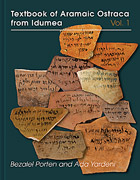So, I’m presently thinking long and hard about merging The Aramaic Blog and AramaicNT.org (The Aramaic New Testament) permanently.
Here at The Aramaic Blog, I get a heck of a lot of traffic, but I haven’t been doing much with it lately. The Aramaic New Testament, however, has a lot going for it, it’s on an up-to-date self-hosted WordPress install so I have much more control, it looks spiffier, it hosts all of my Aramaic courseware and translations, and it’s really where I wish to expand upon over the next year. Both often overlap in their purview so much that I’ve often found myself debating which blog to post something new to.
Historically they were separate because The Aramaic Blog had more of an academic focus where AramaicNT.org had more of a theological focus. However, when I re-designed AramaicNT.org it became much more academically centered with fewer personal theological elements. Since then, I only tend to expound theologically on my personal blog, so the need for two Aramaic “spots” is no longer an issue.
So, if a merger is to happen, I would be taking all of the articles here on The Aramaic Blog and adding them to The Aramaic New Testament and setting up the proper redirects so that when folks go looking for the old articles, they’ll land on the new pages.
What do you, dear readers, think?
Peace,
-Steve



